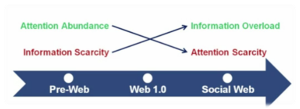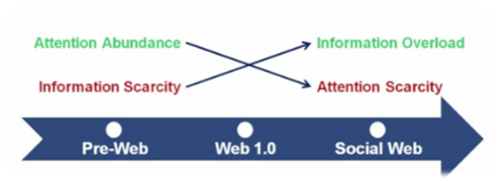 Struggling to make ends meet as a young teacher, I pursued a part-time job as a waiter at a popular local restaurant, where I was told there were no positions available. I completed an employment application…just in case…and handed it to the restaurant manager, who thanked me, and placed my application on top of a very tall stack of papers on his desk.
Struggling to make ends meet as a young teacher, I pursued a part-time job as a waiter at a popular local restaurant, where I was told there were no positions available. I completed an employment application…just in case…and handed it to the restaurant manager, who thanked me, and placed my application on top of a very tall stack of papers on his desk.
As I left his office, I asked the manager about my chances of getting a waiter’s job there. “You see this big pile of applications?” he chuckled.
Not satisfied with his answer, I asked, “When a waiter position becomes available, how will you select which candidates to interview?”
The manager replied, “That’s easy. I just pick 3 applications from the top of my pile.”
So I made him an offer. “I really need this job. I’ll come back here every few days to complete a new application, so that mine stays at the top of your pile. Or you can hire me as a busboy right now, and I’ll clear tables and wash dishes for as long as it’s necessary, if you promise to give me the first waiter position that becomes available.”
I served as a busboy for two months before I earned a job as a waiter, which helped to pay my bills. More importantly, the experience provided some valuable insights about “making the short list” that continue to have direct application to our B2B marketing business.
“Making the short list” in B2B marketing means that your firm has been chosen by a prospective client as a candidate for an assignment. At least 3 candidates, and as many as 5 or 6, are typically included on a potential client’s short list.
For a B2B firm, making the short list is always a priority, and here’s what my restaurant experience taught me on the subject:
Provide Good Reasons to be on the Short List
The restaurant manager had a few good reasons to put me on his short list. He knew I was motivated, and different from those applicants who were willing to participate in his selection process. More importantly, I positioned myself as a safe choice by giving him an opportunity to evaluate my potential as a waiter, based on my actual performance as a busboy.
Your B2B firm must find meaningful ways to differentiate itself and showcase tangible assets. Claiming your firm “has 80 years of combined professional experience,” for example, is not a strong value proposition. Having a blue chip client explain, in a short video, her selection criteria and experience with your firm, is far more likely to earn you a spot on a prospect’s short list. Third-party validation also addresses career risk: the prospect’s fear that hiring the wrong outside resource will affect their own reputation, bonus or employment status.
There are many ways to differentiate yourself in a competitive marketplace, but most often they require some original thought, clever packaging and elbow grease.
Put Your Firm into a Position to Make the Short List
Unlike my tenure as a busboy, you won’t be able to demonstrate value directly to a potential client in advance of an actual engagement. But for starters, your B2B firm must maintain a consistent presence on all the radar screens that your prospects monitor. “Fist-call capability” is how well your firm puts itself in a position to be noticed by target audiences, and it’s the key factor affecting your chances of making the short list.
What’s surprising in our current B2B world – where at least 70% of the short list selection process in made online, in advance of any direct contact – is that so many B2B firms have ineffective or outdated websites; provide no catalysts to drive traffic to their website; generate no content to validate their intellectual capital; and fail to properly leverage social media tools, such as LinkedIn, that prospective clients use to discover candidates for their short list.
Many B2B firms believe that simply doing great work for existing clients will drive all the referrals and word-of-mouth recommendations necessary to put them on short lists, or allow them to avoid having to compete at all. Their lunch is often eaten by competitors who not only do great work for clients, but also don’t rely on others to put them on the short list.
Increase Your Odds of Making the Short List over the Long Haul
The most difficult aspect of marketing for B2B firms involves transparency: never knowing when your prospects are ready to buy. I was prepared to re-apply for the restaurant’s waiter position every week if necessary; but that level of persistence is more likely to eliminate a B2B firm from short list consideration. A more sophisticated, strategic, nuanced approach is required.
To drive consistent top-of-mind awareness with target audiences, you’ll need to do far more than simply show up all the right radar screens. Over the long haul, your B2B firm must communicate directly, consistently and effectively with its clients, prospects, referral sources and employees. This is an easy concept to understand, but it’s the exception rather than the rule in B2B marketing. We are more likely to see B2B firms with great thought leadership that’s not appreciated by their target audiences, for lack of an effective CRM system; B2B firms that religiously push out canned newsletters and curated content that diminishes their brand stature; and B2B firms that fail to appreciate how their employees can serve as either brand ambassadors or terrorists.
There’s a profoundly simple, Yogi Berra-esque message here: you first need to get into the game, if you’re hoping to win it. In a business world increasingly driven by RFPs and RFIs, and where gaining and maintaining visibility with decision-makers is essential, B2B firms need to add “Short List Participation Rate” as a key performance indicator for their marketing investment.























